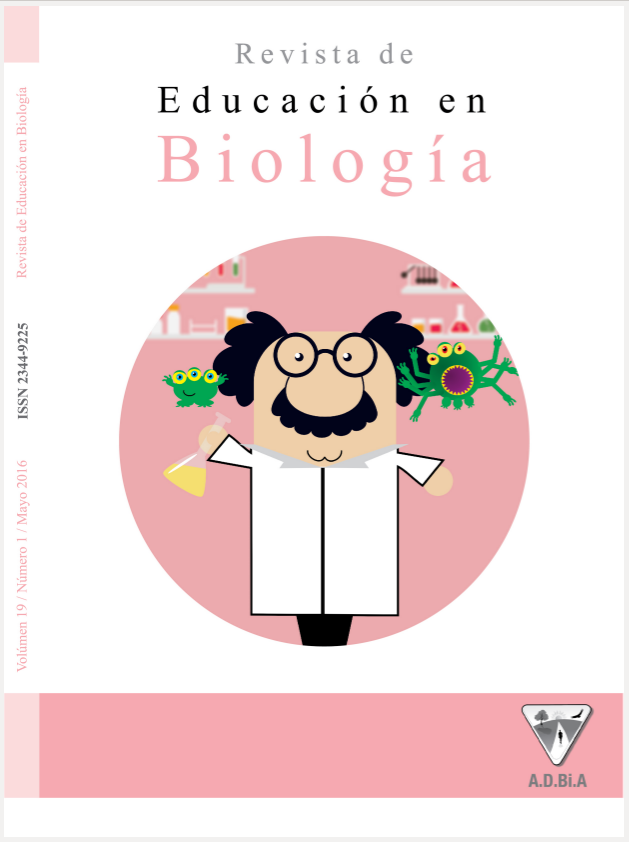The Tree-thinking Challenge: Analyzing the Use of Evolutionary Trees with Secondary Education Students
Main Article Content
Abstract
This paper deals with an analysis of tree thinking development in ninth grade
secondary education students of a public school in Bogota (Colombia); for this, transcriptions of class recordings, field and observation notes, and data analysis documents were used. A qualitative approach was used to study the students’ explanations, arguments and schematic representations about the evolutionary relations between some species and their common ancestor. The observations and interpretations made allow to assert that the students are able to develop tree thinking and to build evolutionary relations. However, using the visual representation of evolutionary trees requires teachers to receive a kind of training that would allow them to take into account and overcome the difficulties documented in this work.
secondary education students of a public school in Bogota (Colombia); for this, transcriptions of class recordings, field and observation notes, and data analysis documents were used. A qualitative approach was used to study the students’ explanations, arguments and schematic representations about the evolutionary relations between some species and their common ancestor. The observations and interpretations made allow to assert that the students are able to develop tree thinking and to build evolutionary relations. However, using the visual representation of evolutionary trees requires teachers to receive a kind of training that would allow them to take into account and overcome the difficulties documented in this work.
Article Details
How to Cite
The Tree-thinking Challenge: Analyzing the Use of Evolutionary Trees with Secondary Education Students. (2016). Journal of Biology Education, 19(1), (pp. 54-72). https://doi.org/10.59524/2344-9225.v19.n1.22530
Section
Investigaciones y desarrollos

This work is licensed under a Creative Commons Attribution-NonCommercial-ShareAlike 4.0 International License.
Aquellos autores/as que tengan publicaciones con esta revista, aceptan los términos siguientes:- Los autores/as conservarán sus derechos de autor y garantizarán a la revista el derecho de primera publicación de su obra, el cuál estará simultáneamente sujeto a la Licencia de reconocimiento de Creative Commons que no se permite un uso comercial de la obra original ni de las posibles obras derivadas, la distribución de las cuales se debe hacer con una licencia igual a la que regula la obra original.
- Los autores/as podrán adoptar otros acuerdos de licencia no exclusiva de distribución de la versión de la obra publicada (p. ej.: depositarla en un archivo telemático institucional o publicarla en un volumen monográfico) siempre que se indique la publicación inicial en esta revista.
- Se recomienda a los autores/as difundir su obra a través de Internet (p. ej.: en archivos telemáticos institucionales o en su página web) después del proceso de publicación, lo cual puede producir intercambios interesantes y aumentar las citas de la obra publicada. (Véase El efecto del acceso abierto).
How to Cite
The Tree-thinking Challenge: Analyzing the Use of Evolutionary Trees with Secondary Education Students. (2016). Journal of Biology Education, 19(1), (pp. 54-72). https://doi.org/10.59524/2344-9225.v19.n1.22530

